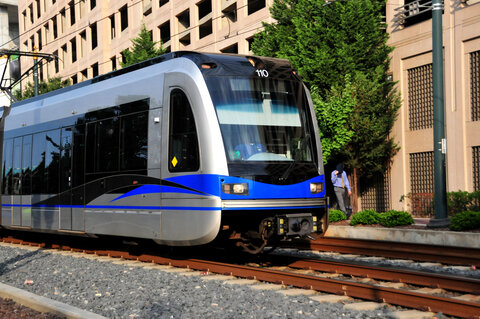
Marc Joffe
The Metropolitan Council, a regional planning and policymaking body for the Minneapolis-St. Paul area, is pushing ahead with a second suburban light rail transit extension while struggling to complete another one which is nine years behind schedule. The Council’s actions, like those of other agencies pursuing light rail, show a disregard for taxpayers and other stakeholders.
As Minnesota’s Legislative Auditor has reported, the Council originally obtained federal support for its Southwest Green Line Light Rail extension in 2011 based on an estimated cost of $1.25 billion and a revenue service date of 2018. The most recent available estimates (from two years ago) call for service to begin in 2027 and an overall project cost of $2.74 billion.
The pre-pandemic daily ridership estimate for the extension was a modest 28,900 trips. It remains to be seen whether those anticipated riders show up. Ridership on the current Green Line service which connects downtown Minneapolis and downtown St. Paul is around 25,000, well below 2019 levels.
Yet despite its struggles with the Green Line extension, the Met Council is going full steam ahead with plans to extend the Blue Line through the northwestern Minneapolis suburbs of Robbinsville, Crystal, and Brooklyn Center. The project is listed as one of those in line for a Federal Transit Administration Capital Investment Grant as shown on the agency’s monthly dashboard.
The Blue Line extension has been in the grant pipeline for several years but suffered a setback in 2018 when BNSF broke off discussions with the Met Council about allowing light rail trains to share its existing freight rail tracks. A few years later, planners returned with a more expensive plan to create a new right of way for the line, mostly along County Route 81.
David Robins who led opposition to the Blue Line extension in 2023 before moving away from Robbinsville told me:
The Met Council members are not elected, but rather, appointed by the governor to handle a huge range of disparate tasks in the metro Twin Cities area, such as wastewater treatment, parks planning, aviation oversight, public housing and public transit. They have no set budget. Their decisions often override the decisions of local municipalities. It’s unbridled power. SLR81 has always favored responsible, scalable, low impact and safe public transit, but there’s ample evidence Light Rail isn’t even needed, and alternative options have been flatly dismissed. There are legitimate concerns about massive cost overruns and project delays on other lines, crime along existing lines, and disruptions to core business and residential areas. It makes little sense to trust the largest public works project in Minnesota history to the Met Council.
The 695 signers of Robins’s anti-Blue Line extension petition at change.org cited a variety of reasons for their opposition, including potential business displacement, pedestrian safety, and crime. Suburban residents often oppose transit projects because they make it easier for perpetrators to reach their neighborhoods from urban areas, a fear that has some support in academic literature.
Another concern with the Blue Line is the potential for gentrification. If proximity to new transit stations raises land values, owners might raise rents or evict tenants to build more costly housing. The Met Council asked the University of Minnesota Center for Urban and Regional Affairs to propose measures that would alleviate the impact of Blue Line gentrification. The Center recommended that residents living along the new line receive a basic income, while also benefiting from rent controls, government-funded legal representation upon receipt of an eviction notice, and other protections. It is not clear how this package would be funded, or whether it is even necessary given the uncertainty around ultimate ridership. But the Met Council accepted the proposals anyway.
Rather than worry about the spread of crime and the risks of gentrification, the Met Council should consider abandoning the Blue Line extension. If that is a step too far for the planners, perhaps they can at least defer further work until the Green Line extension is finished and actual ridership data become available.






